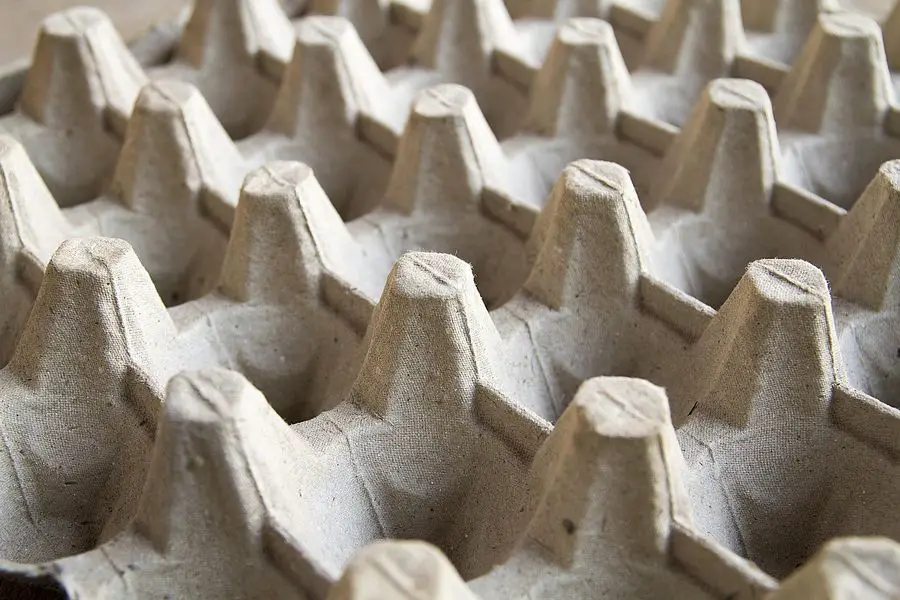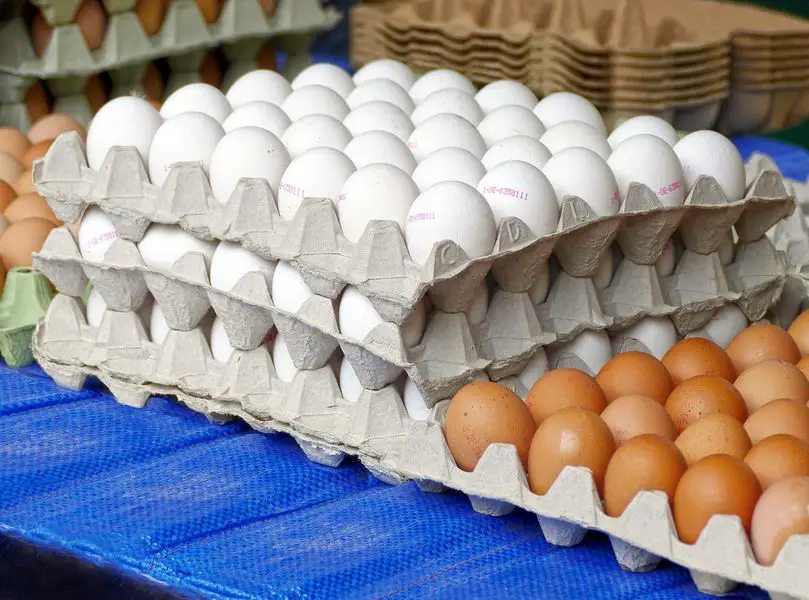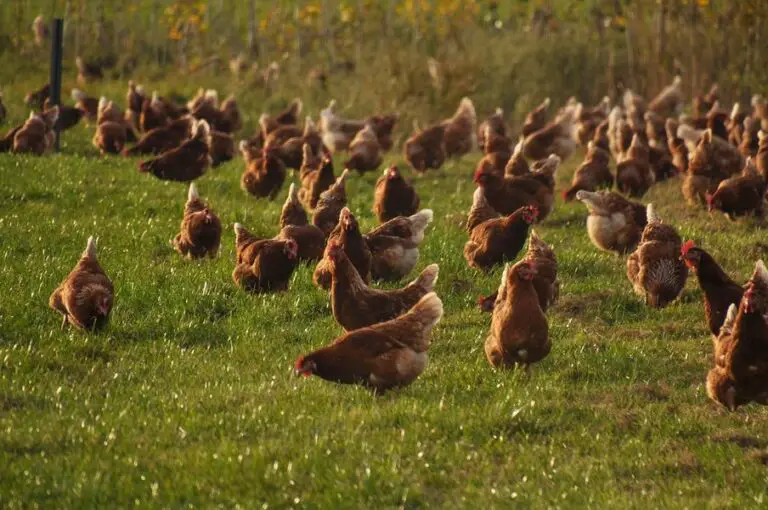Eggs are one of the main animal products consumed by humans. The large-scale production of this food comes with several sustainability challenges. One of these challenges is the packaging.
If you’ve ever wondered whether egg cartons belong in the recycling bin, you’re not alone. The recyclability of egg cartons depends on their material—some can be easily recycled, while others pose challenges.
Egg cartons can be recycled, composted, or repurposed, but some materials can be harder to process than others.
There are also creative ways to reuse egg cartons to reduce waste.
Main Takeaways
- Recyclability Depends on Material – Cardboard egg cartons are widely recyclable and compostable. Plastic cartons can often be recycled, while Styrofoam cartons are rarely accepted in curbside programs.
- Contamination Can Prevent Recycling – Egg residue and dirt can make recycling difficult, leading to facilities rejecting it.
- Recycling Infrastructure Varies – Some areas have limited facilities for processing certain materials like Styrofoam.
- Composting is an Eco-Friendly Option – Cardboard egg cartons decompose easily and enrich soil when composted.
- Alternative Uses Reduce Waste – Egg cartons can be repurposed for crafts, seed starters, fire starters, and DIY projects.
- Egg Carton Soundproofing is a Myth – While they may slightly diffuse sound, they do not effectively block noise.
- Seasonal and DIY Uses Promote Sustainability – Using egg cartons for art, holiday decorations, and educational projects can help reduce landfill waste.

Photo By: Tongpradit Charoenphon
Importance of Recycling and Waste Management
Sustainable waste management and recycling are cornerstones of environmental protection, as they help minimise the negative impacts of waste on natural resources and ecosystems.
Waste management of solid materials can provide opportunities to reutilise the materials, either without changing their structure or reversing them into a raw material that can then be retransformed.
This is a great opportunity not only for environmental stewardship but also for sustainable economic development.
This approach protects the conservation of natural resources, promotes the efficient utilisation of resources, and reduces pollution.
Improper disposal and dumping, on the other hand, lead to environmental degradation and pollution of waterways and natural habitats.
Pollution harms biodiversity, disrupts ecosystems, and poses risks to human health.
Poor waste management also heavily contributes to climate change through the release of greenhouse gases.
Materials Used For Egg Cartons
Egg cartons are primarily made from three materials: molded pulp, which is made of cardboard or paper, plastic, and polystyrene foam, also called Styrofoam.
Each material has different properties and reasons why they are used for egg conservation. These properties affect the protection of eggs, the sustainability of the product, and the durability of the packaging.
Molded Pulp (Cardboard/Paper): This material comes from recycled paper and cardboard and is made into molded pulp that is biodegradable and recyclable, making it an eco-friendly option.
Their structure provides effective protection to eggs during transport. However, they are susceptible to moisture, which can weaken their structural integrity and reduce protective capabilities.
Plastic: Typically made from clear PET (polyethylene terephthalate), plastic egg cartons are durable and resistant to moisture.
They can be made with recyclable plastic, but the actual recycling depends on local facilities and regulations and can be challenging. Plastic cartons are not biodegradable, raising environmental concerns if not properly recycled.
Polystyrene Foam (Styrofoam): These cartons provide excellent insulation and cushioning, protecting eggs from physical damage. They are light and moisture-resistant, making them very durable.
However, polystyrene foam is not biodegradable and is challenging to recycle, and it comes with a great risk of environmental pollution. Its production and disposal have raised significant environmental concerns.
Egg carton material impacts not only the protection and shelf life of eggs but also environmental sustainability. While molded pulp cartons are more environmentally friendly, they may lack the durability of plastic or polystyrene options. Plastic and polystyrene cartons offer more durability and protection but have greater environmental risks.
Why Some Egg Cartons Are Not Recyclable
The recyclability of egg cartons is influenced by several factors. These factors do not include only material composition but are also affected by the presence of contaminants, limitations in recycling infrastructure, and economic considerations.
1 . Contamination Issues
Egg cartons, especially those made from molded pulp or paper, can become contaminated with residues from eggs and broken eggs. Contamination can compromise the recycling process by introducing impurities that degrade the quality of the recycled material. Recycling facilities may reject contaminated items to maintain the integrity of their output.
2 . Limitations in Recycling Infrastructure
Materials like Styrofoam (expanded polystyrene) present challenges for recycling facilities. Styrofoam is lightweight and bulky, making it inefficient to transport and process.
Many recycling centres lack the specialised equipment required to handle Styrofoam, and this is the reason why this product is often excluded from recycling programs.
3 . Economic Factors
The economic viability of recycling certain materials plays a crucial role in their recyclability. For instance, the recycling of Styrofoam is often not cost-effective due to low market demand for the recycled material and high processing costs.
4 . Material Degradation
Paper fibres degrade with each recycling cycle; this is important, and not many people know this fact. Paper fibres repeatedly recycled become shorter and less durable.
Egg cartons made from recycled paper often contain a high concentration of these short fibres, which are less desirable for recycling because they produce lower-quality recycled products. As a result, some recycling programs may not accept paper egg cartons.

Photo By: Wolfgang Eckert
Alternative Uses for Egg Cartons
In light of all this consideration, it is evident that the recyclability of egg cartons is a more complex issue than one can think.
It would be very sensible, although not practical for everyone, to come up with different ways to reuse cartoons.
Are Egg Cartons Compostable?
One of the best options for some of these packaging materials is composting.
Cardboard egg cartons, made from molded pulp or recycled paper, are compostable. They can be torn into small pieces and added to compost piles. They decompose in 2 to 4 weeks and are a good enrichment for the soil with organic matter.
In contrast, plastic and Styrofoam egg cartons are not suitable for composting.
Plastic cartons do not break down in compost systems and should be recycled through appropriate channels.
Styrofoam cartons, made from polystyrene, are neither biodegradable nor easily recyclable, making them unsuitable for composting.
Crafts Using Egg Cartons
Repurposing egg cartons into crafts is an eco-friendly and creative way to transform waste into decorative items.
Egg Carton Flowers
Creating flowers from egg cartons is a simple and enjoyable activity suitable for all ages. Here’s a basic example:
- Prepare the Egg Carton: Cut individual cups from the carton to serve as the flower bases.
- Shape the Petals: Trim the edges of each cup to form petal shapes, customising them to resemble different flower types.
- Add Stems: Attach pipe cleaners or wooden skewers to the base of each cup to act as stems.
- Paint and Decorate: Use paints, markers, or other embellishments to colour the flowers, adding details like leaves or centres for a realistic touch.
These handcrafted flowers can be used in various decorative applications, such as wreaths, garlands, or standalone bouquets. For instance, creating a spring wreath with egg carton flowers can add a festive touch to your home decor.
Such crafts foster creativity and also promote sustainable practices by reusing materials that might otherwise be difficult to recycle.

Photo By: Paper Flower
Using Egg Cartons as Biodegradable Seed Starters
Starting seeds in cardboard egg cartons is an eco-friendly and cost-effective method for gardeners to initiate plant growth. These biodegradable containers can be directly planted into the soil, minimising transplant shock for seedlings.
- Prepare the Egg Carton:
- Use a clean cardboard egg carton.
- Poke small drainage holes in the bottom of each compartment to prevent water accumulation.
- Add Soil:
- Fill each section about halfway with a light, well-draining seed-starting mix.
- Plant Seeds:
- Place two to three seeds in each compartment, following the depth recommendations on the seed packet.
- Lightly cover the seeds with additional soil.
- Water:
- Gently water the soil until it’s moist but not waterlogged.
- Place the carton on a tray or plate to catch any excess water.
- Provide Light and Warmth:
- Position the carton in a warm, well-lit area, such as a south-facing window.
- Maintain consistent moisture, ensuring the soil doesn’t dry out.
- Transplanting:
- Once seedlings have developed their first true leaves and outdoor conditions are suitable, they can be transplanted.
- Cut or tear each compartment apart, being careful not to damage the seedlings.
- Plant each section directly into the garden soil; the cardboard will decompose over time.
Cardboard egg cartons have limited space and soil volume, which can restrict root growth if seedlings are kept in them for too long.
Ensure adequate drainage to prevent mold growth. Monitor moisture levels closely, as the small soil volume can dry out quickly.
Create Fire Starters
Combining dryer lint and wax in paper cartons to create fire starters.
Creating homemade fire starters using dryer lint, wax, and cardboard egg cartons is an efficient and eco-friendly way to repurpose egg cartoons. These fire starters are particularly useful for camping trips or lighting fireplaces.
DIY Projects for Kids
Engaging children in creative activities using recycled materials like egg cartons not only helps to develop their imagination but also gives valuable lessons on sustainability.
Egg cartons are versatile and can be transformed into various fun and educational crafts.
- Egg Carton Caterpillars
Transform egg cartons into caterpillars. Children can paint individual cups, add googly eyes, and attach pipe cleaners for antennae, creating their own unique ones.
- Egg Carton Treasure Chests
Create miniature treasure chests. Children can decorate carton sections to resemble chests, which are great fun for storage of tiny treasures or as props for pirate-themed adventures.
- Egg Carton Boats
Set sail with egg carton boats. By attaching sails made from straws and paper, kids can craft boats that float, making bath time or pool play more exciting.
- Egg Carton Animals
From turtles to birds, egg cartons can be transformed into various animals. With some paint, paper, and creativity, children can create their favourite animals.
- Egg Carton Masks
Making masks from egg cartons can be very fun. Kids can cut and paint the cartons; kids can design unique masks for imaginative play.
- Egg Carton Christmas Stars
Craft Christmas stars for your holidays. Egg cartons can be cut and assembled into star shapes, then painted and decorated to adorn the Christmas tree.
Egg Carton Dimensions and Measurements
Egg cartons come in multiple sizes for different quantities and sizes of eggs:
- 12-Egg Cartons: Typically measuring approximately 11.75 inches in length and 4 inches in width, with individual cell dimensions around 1.75 inches wide by 2.75 inches high.
- 18-Egg Cartons: Designed to hold larger quantities, these cartons often have a 3×6 configuration, suitable for small to extra-large eggs.
- 30-Egg Trays: Commonly used for bulk packaging, these trays measure about 11.75 inches by 11.25 inches, with each cell approximately 2 inches by 2 inches.
Egg Carton and Soundproofing
There is a myth suggesting that egg cartons can soundproof rooms. It was a very common instance in the 90s when inspiring rock garage bands covered the room and played with carton eggs. However, it is now well known that this is a myth and that egg cartons lack the necessary material properties to absorb significant sound energy, especially at lower frequencies. Therefore, they are ineffective for soundproofing purposes.
Seasonal Crafts
Egg cartons can be repurposed for festive decorations:
- Christmas Crafts: Create miniature Christmas trees, ornaments, or festive wreaths by painting and assembling egg carton pieces.
- Halloween Crafts: Craft spooky decorations like bats, ghosts, or pumpkins using egg cartons, paint, and other embellishments.
Egg Carton Paper Mâché
Egg cartons can be transformed into paper mâché pulp for various art projects. By tearing the cartons into small pieces, soaking them in water, and blending them into a pulp, one can create a moldable material suitable for sculpting and crafting.
These diverse applications highlight the versatility of egg cartons, encouraging both creative expression and sustainable practices.
For a visual guide on creating egg carton animals, you might find this tutorial helpful.
Conclusions
The recyclability of egg cartons is influenced by their material composition, local recycling capabilities, and contamination levels.
Paper-based cartons are generally recyclable and compostable, offering an environmentally friendly option.
Plastic cartons, often made from PET, can be recycled in many areas, but it’s essential to verify local recycling guidelines.
Styrofoam cartons present significant recycling challenges due to processing difficulties and limited market demand for recycled polystyrene.
Contamination from food residues can hinder the recycling process for all types of egg cartons. Therefore, consumers should ensure cartons are clean before recycling and explore alternative uses, such as composting or crafting, to minimise environmental impact.



